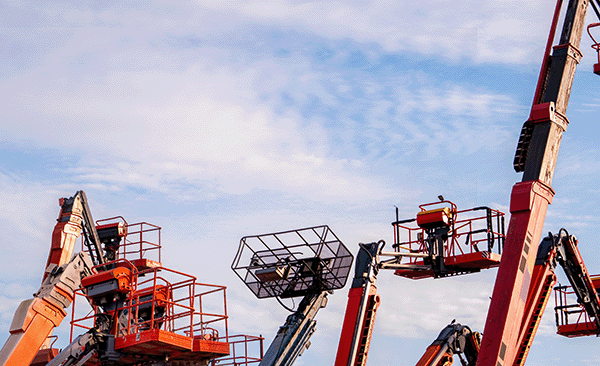Partner with Downstream

When your job takes you to new heights, the right equipment makes all the difference. Whether you’re installing lighting in a warehouse or repairing signage on a high-rise, aerial work platforms provide the reach and stability to get it done safely and efficiently. But not all platforms are created equal — and choosing the right type and size can mean the difference between a smooth project and a logistical headache. In this guide, we’ll break down the different types of AWPs and help you find the perfect fit for your next job.

When it comes to working at height, aerial work platforms (AWPs) are the go-to solution across construction, maintenance, and industrial job sites. Also referred to as mobile elevating work platforms (MEWPs), these machines provide a safe and efficient way to access hard-to-reach places. But with various types and sizes available, choosing the right equipment for your job can be a challenge.
In this guide, we’ll walk you through the most common types of AWPs — including scissor lifts, boom lifts, and telehandlers — and explore the size ranges and ideal applications for each.
Understanding the different types of aerial work platforms is essential when determining which equipment is best suited for your project. Each type comes with its own set of capabilities, advantages, and ideal use cases. The following breakdown highlights the most common categories of AWPs, helping you identify the right machine based on your specific needs and jobsite conditions.
Scissor lifts are vertical-only platforms that extend straight up, using a crisscrossing metal support structure. They are best suited for jobs that require stable, vertical elevation and have limited horizontal reach.

Boom lifts include both articulating and telescopic varieties. Articulating booms have jointed arms that allow the platform to bend and move around obstacles, while telescopic booms offer straight reach with higher maximum heights.
Telehandlers are multi-purpose machines with an extendable boom, often used to lift heavy loads to elevated heights. While not a traditional work platform, they can be fitted with a work basket or attachments to perform aerial tasks.
Once you’ve identified the type of aerial work platform best suited for your project, the next crucial step is selecting the appropriate size. Choosing the right size ensures efficiency, safety, and cost-effectiveness. Different jobs require varying working heights, weight capacities, and outreach capabilities. Below, we’ll explore size considerations for each equipment type to help you make an informed rental decision.
Scissor lifts range widely in height and platform size, making them suitable for different environments:
Boom lifts are all about reach and flexibility:
Telehandlers are measured more by lift height and capacity than by platform size:
The key to selecting the right size aerial work platform lies in matching the platform's capabilities to the job's requirements. Consider the following factors:
At Downstream, we make it easy to rent the right aerial work platform for your job. Our fleet includes a wide range of scissor lifts, boom lifts, and telehandlers in various sizes and power configurations — all maintained to the highest safety standards.
Whether you're tackling indoor maintenance or a multi-story construction project, Downstream's expert support ensures you get the right equipment, when and where you need it. Check out our equipment rental options today.
For further reading on aerial work platform safety and standards, visit:
By understanding the nuances of aerial work platform types and sizes, you can maximize productivity and ensure worker safety across any project.
-min.webp)
Quis nostrud exercitation ullamco laboris nisi ut aliquip ex ea commodo consequat. Duis aute irure dolor in voluptate.
